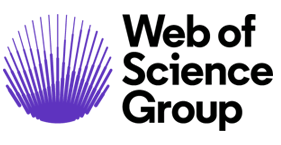Evaluating Rock Mass Quality and Critical Depth for Rockburst Hazard in Deep Mines
Downloads
This study investigates the geomechanical behavior of the rock mass at the Zhayssan mine in Kazakhstan, focusing on improving the safety of deep mining operations. The objective is to forecast the working strength of rock masses and assess the associated rockburst risks, especially given the limited existing data on the mechanical properties of the site’s rocks. To achieve this, we conducted comprehensive laboratory tests to determine rock strength characteristics, brittleness, and elastic energy accumulation capacity. We analyzed these data using the Rock Quality Designation (RQD) indicator and constructed a simplified geomechanical model of the deposit. Our findings reveal that rock mass quality improves with depth, as indicated by higher RQD values and reduced fracturing intensity; however, this improvement coincides with an increased risk of dynamic rock pressure events, particularly beyond the analytically estimated critical depth of approximately 400 meters. The study’s novelty lies in its integration of local testing data with comparative regional data, allowing for a more robust preliminary risk assessment despite limited local measurements. As promising directions, the paper suggests further laboratory and field research to refine methods for forecasting the strength and stability of mine workings.
Downloads
[1] Li, S., Wang, L., Ren, Q., Zhu, C., Liu, H., Liu, H., & Chen, L. (2022). A Study on the Influence of Mining Depth on the Stress Distribution Characteristics of Stope Surrounding Rock. Geofluids, 2022, 1–12. doi:10.1155/2022/4178554.
[2] Wu, H., Wang, X., Yu, W., Wang, W., Zhang, Z., & Peng, G. (2020). Analysis of influence law of burial depth on surrounding rock deformation of roadway. Advances in Civil Engineering, 2020, 8870800. doi:10.1155/2020/8870800.
[3] Zhang, C., Ye, D., Yang, P., Wu, S., & Wang, C. (2020). Study on impact tendency of coal and rock mass based on different stress paths. Advances in Civil Engineering, 2020, 8883537. doi:10.1155/2020/8883537.
[4] Cheng, L., Zhang, Y., Ji, M., Cui, M., Zhang, K., & Zhang, M. (2015). Theoretical Calculation and Analysis on the Composite Rock-Bolt Bearing Structure in Burst-Prone Ground. Mathematical Problems in Engineering, 2015, 1–6. doi:10.1155/2015/434567.
[5] Kang, H. (2014). Support technologies for deep and complex roadways in underground coal mines: a review. International Journal of Coal Science & Technology, 1(3), 261–277. doi:10.1007/s40789-014-0043-0.
[6] Mussin, A., Kydrashov, A., Asanova, Z., Abdrakhman, Y., & Ivadilinova, D. (2024). Ore dilution control when mining low-thickness ore bodies using a system of sublevel drifts. Mining of Mineral Deposits, 18(2), 18–27. doi:10.33271/mining18.02.018.
[7] Ghazdali, O., Moustadraf, J., Tagma, T., Alabjah, B., & Amraoui, F. (2021). Study and evaluation of the stability of underground mining method used in shallow-dip vein deposits hosted in poor quality rock. Mining of Mineral Deposits, 15(3), 31–38. doi:10.33271/MINING15.03.031.
[8] Sun, L., Hu, N., Ye, Y., Tan, W., Wu, M., Wang, X., & Huang, Z. (2022). Ensemble stacking rockburst prediction model based on Yeo–Johnson, K-means SMOTE, and optimal rockburst feature dimension determination. Scientific Reports, 12(1), 15352. doi:10.1038/s41598-022-19669-5.
[9] Wang, H., Li, Z., Song, D., He, X., Sobolev, A., & Khan, M. (2021). An intelligent rockburst prediction model based on scorecard methodology. Minerals, 11(11), 1294. doi:10.3390/min11111294.
[10] Zhu, Q., Zhao, X., & Westman, E. (2021). Review of the Evolution of Mining-Induced Stress and the Failure Characteristics of Surrounding Rock Based on Microseismic Tomography. Shock and Vibration, 2154857. doi:10.1155/2021/2154857.
[11] Zeitinova, S., Imashev, A., Bakhtybayev, N., Matayev, A., Mussin, A., & Yeskenova, G. (2024). Numerical Modeling the Rock Mass Stress-Strain State Near Vertical Excavations in Combined Mining. Civil Engineering Journal (Iran), 10(9), 2919–2934. doi:10.28991/CEJ-2024-010-09-010.
[12] Zholmagambetov, N., Khalikova, E., Demin, V., Balabas, A., Abdrashev, R., & Suiintayeva, S. (2023). Ensuring a safe geomechanical state of the rock mass surrounding the mine workings in the Karaganda coal basin, Kazakhstan. Mining of Mineral Deposits, 17(1), 74–83. doi:10.33271/mining17.01.074.
[13] Abdiev, A. R., Wang, J., Mambetova, R. S., Abdiev, A. A., & Abdiev, A. S. (2025). Geomechanical assessment of stress-strain conditions in structurally heterogeneous rock masses of Kyrgyzstan. Engineering Journal of Satbayev University, 147(2), 31–39. doi:10.51301/ejsu.2025.i2.05.
[14] Rojas Perez, C., Wei, W., Gilvesy, A., Borysenko, F.-J., & Mitri, H. (2024). Rockburst assessment and control: a case study of a deep sill pillar recovery. Deep Mining 2024: Proceedings of the 10th International Conference on Deep and High Stress Mining, Australian Centre for Geomechanics, Perth, 659–672. doi:10.36487/acg_repo/2465_40.
[15] Cortés, N., Hekmatnejad, A., Pan, P., Mohtarami, E., Pena, A., Taheri, A., & González, C. (2024). Empirical approaches for rock burst prediction: A comprehensive review and application to the new level of El Teniente Mine, Chile. Heliyon, 10(5), e26515. doi:10.1016/j.heliyon.2024.e26515.
[16] Heidbach, O., Barth, A., Müller, B., Reinecker, J., Stephansson, O., Tingay, M., & Zang, A. (2016). WSM quality ranking scheme, database description and analysis guidelines for stress indicator. WSM Technical Report 16-01, World Stress Map Project, Potsdam, Germany.
[17] Kayal, J. (2008). Dynamics of Faulting and Fault Plane Solution. In: Micro-earthquake Seismology and Seismotectonics of South Asia. Springer, Dordrecht, Netherlands. doi:10.1007/978-1-4020-8180-4_4.
[18] Röckel, L., Ahlers, S., Müller, B., Reiter, K., Heidbach, O., Henk, A., Hergert, T., & Schilling, F. (2022). The analysis of slip tendency of major tectonic faults in Germany. Solid Earth, 13(6), 1087–1105. doi:10.5194/se-13-1087-2022.
[19] Abdiev, A. R., Mambetova, R. S., & Mambetov, S. A. (2017). Geomechanical assessment of Tyan-Shan’s mountains structures for effi cient mining and mine construction. Gornyi Zhurnal, 4(4), 23–28. doi:10.17580/gzh.2017.04.04.
[20] Kazakhmys (2020). Mining plan for the development of Zhomart deposit. Kazakhmys Corporation LLP Head Design Institute. Astana, Kazakhstan.
[21] Takhanov, D., Zhienbayev, A., & Zharaspaev, M. (2024). Determining the parameters for the overlying stratum caving zones during re-peated mining of pillars. Mining of Mineral Deposits, 18(2), 93–103. doi:10.33271/mining18.02.093.
[22] Zhienbayev, A., Balpanova, M., Asanova, Z., Zharaspaev, M., Nurkasyn, R., & Zhakupov, B. (2023). Analysis of the roof span stability in terms of room-and-pillar system of ore deposit mining. Mining of Mineral Deposits, 17(1), 129–137. doi:10.33271/mining17.01.129.
[23] Zhienbayev, A., Takhanov, D., Zharaspaev, M., Kuttybayev, A., Rakhmetov, B., & Ivadilinova, D. (2025). Identifying rational locations for field mine workings in the zone influenced by mined-out space during repeated mining of pillars. Mining of Mineral Deposits, 19(1), 1–12. doi:10.33271/mining19.01.001.
[24] Somodi, G., Bar, N., Kovács, L., Arrieta, M., Török, Á., & Vásárhelyi, B. (2021). Study of rock mass rating (RMR) and Geological Strength index (GSI) correlations in granite, siltstone, sandstone and quartzite rock masses. Applied Sciences, 11(8), 3351. doi:10.3390/app11083351.
[25] Ahrami, O., Javaheri Koupaei, H., & Ahangari, K. (2024). Determination of deformation modulus and characterization of anisotropic behavior of blocky rock masses. Mining Science and Technology (Russian Federation), 9(2), 116–133. doi:10.17073/2500-0632-2023-08-143.
[26] Kulbayev, B., Lapin, V., Shakhnovich, A., Shokbarov, Y., Tuleyev, T., Aldakhov, S., Aldakhov, Y., & Ali, A. (2024). Strength and Deformability of Structural Steel for Use in Construction. Civil Engineering Journal (Iran), 10(3), 796–807. doi:10.28991/CEJ-2024-010-03-09.
[27] Barton, N. (2002). Some new Q-value correlations to assist in site characterisation and tunnel design. International Journal of Rock Mechanics and Mining Sciences, 39(2), 185–216. doi:10.1016/S1365-1609(02)00011-4.
[28] Lin, F., Luan, H., Zeng, Y., & Zhong, Z. (2017). Some New Correlations of Q-Value with Rock Mechanics Parameters in Underground Oil Storage Caverns. Civil Engineering Journal, 3(8), 537–546. doi:10.28991/cej-2017-00000111.
[29] Hoek, E., & Brown, E. T. (2019). The Hoek–Brown failure criterion and GSI – 2018 edition. Journal of Rock Mechanics and Geotechnical Engineering, 11(3), 445–463. doi:10.1016/j.jrmge.2018.08.001.
[30] Liu, Z., Guo, Y., Du, S., Wu, G., & Pan, M. (2017). Research on calibrating rock mechanical parameters with a statistical method. PLoS ONE, 12(5), 0176215. doi:10.1371/journal.pone.0176215.
[31] Petukhov, I. M., Linkov, A. M., Sidorov, V. S., & Feldman, I.A. (1976). Theory of Protective Layers. Nedra, Moscow, Russia. (In Russian).
[32] Petukhov, I. M., & Linkov, A. M. (1983). Mechanics of rock bursts and outbursts. Nedra, Moscow, Russia. (In Russian).
[33] Lajtai, E. Z. (1971). A theoretical and experimental evaluation of the Griffith theory of brittle fracture. Tectonophysics, 11(2), 129–156. doi:10.1016/0040-1951(71)90060-6.
[34] Alessi, R., & Ulloa, J. (2023). Endowing Griffith’s fracture theory with the ability to describe fatigue cracks. Engineering Fracture Mechanics, 281. doi:10.1016/j.engfracmech.2023.109048.
[35] Cai, M., & Kaiser, P. K. (2018). Rockburst Support Reference Book – Volume I: Rockburst phenomenon and support characteristics. Mining Innovation, Laurentian University (MIRARCO), Sudbury, Canada.
[36] GOV.KZ (2014). Rules for ensuring industrial safety for hazardous production facilities engaged in mining and geological exploration. Order of the Minister of Investment and Development of the Republic of Kazakhstan dated December 30, 2014 No. 352.
[37] Makarov, A. B. (2006). Practical geomechanics. Mining book, Moscow, Russia. (In Russian).
[38] Kirsch, E. G. (1898). The Theory of Elasticity and the Requirements of Strength of Materials. Zeitshrift des Vereines deutscher Ingenieure, 42, 797-807. (In German).
[39] Rezini, D., Khaldi, A., & Rahmani, Y. (2015). On the Boundary Value Kirsch’s Problem. Journal of Mechanics, 32(1), 1–10. doi:10.1017/jmech.2015.93.
- Authors retain all copyrights. It is noticeable that authors will not be forced to sign any copyright transfer agreements.
- This work (including HTML and PDF Files) is licensed under a Creative Commons Attribution 4.0 International License.![]()














